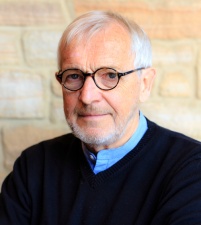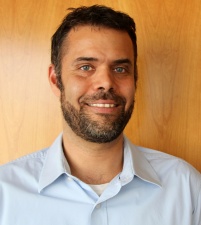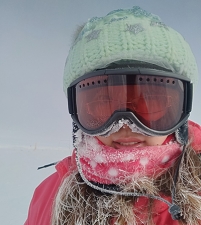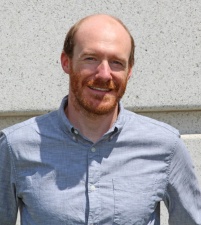Ke Fang is an assistant professor in the Department of Physics at the University of Wisconsin–Madison. Her research focuses on understanding the Universe through its energetic messengers, including ultra-high-energy cosmic rays, gamma rays, and high-energy neutrinos. She runs numerical simulations to study theories of astroparticle sources and analyzes data from HAWC, Fermi-LAT, and IceCube. Ke obtained her Ph.D. in astrophysics from the University of Chicago in 2015. After that, she she held a Joint Space-Science Institute (JSI) fellowship jointly at the University of Maryland and the NASA Goddard Space Flight Center, from 2015 to 2018, and a NASA Einstein fellowship at Stanford University from 2018 to 2020.
Francis Halzen is the principal investigator of IceCube, Hilldale and Gregory Breit Professor at UW–Madison, and a theoretician studying problems that span the particle physics, astrophysics and cosmology communities. In 1987, Halzen started working on the AMANDA experiment, a first-generation neutrino telescope at the South Pole that represented a proof of concept for the IceCube Neutrino Observatory. Halzen also serves on advisory committees for the SNO, Telescope Array, and the Auger upgrade experiments, the Max Planck Institutes in Heidelberg and Munich, the ICRR of the University of Tokyo, the US Particle Physics Prioritization Panel, and the ApPEC particle astrophysics advisory panel in Europe.
Kael Hanson is the director of WIPAC and the director of operations for IceCube as well as a professor of physics at the University of Wisconsin–Madison. Kael has played a major role in the development and construction of IceCube, first managing the development of the IceCube optical modules and later the IceCube data acquisition system. He returned to WIPAC after spending six years as a faculty member in the Department of Physics at the Université Libre de Bruxelles in Brussels, Belgium, where he led the particle astrophysics group. His principal research interests include high-energy neutrino astrophysics and related instrumentation, design of digital logic systems, in particular, precision time applications, and firmware development. In addition to IceCube, he is also a member of the ARA Collaboration.
Albrecht Karle is the IceCube associate director for science and instrumentation, the principal investigator for ARA, and a professor of physics at the University of Wisconsin–Madison. His research is focused on high-energy neutrino astronomy and astrophysics. With IceCube, he focuses on research with neutrinos of all flavors at energies above 30 TeV. He is also exploring new ways to detect ultra-high-energy neutrinos using radio detectors. Karle currently mentors several graduate students and postdocs.
Lu Lu is an assistant professor at UW–Madison in the Department of Physics. Her ultimate goals are to discover the origins of the highest energy particles and to understand their acceleration mechanisms. She did her Ph.D., on searching for EeV photons, at the University of Leeds and Universität Wuppertal. She then moved to Chiba, Japan, and performed searches for PeV neutrinos using IceCube data, leading to the detection of the first Glashow resonance neutrino candidate. She is a member of the IceCube Real-time Oversight Committee and focuses on the extreme-high-energy (EHE) alert channel. She also contributed to R&D of a new sensor designed for the IceCube Upgrade and will continue efforts for the high-energy extension of IceCube-Gen2. As a hobby project, she co-developed an augmented reality app, ICEcuBEAR, to visualize IceCube real-time alerts on mobile phones.
Justin Vandenbroucke is an associate professor in the Department of Physics at the University of Wisconsin–Madison, with a joint appointment in the Astronomy Department. His work at WIPAC includes research in gamma-ray and neutrino astronomy and cosmic rays. Vandenbroucke is the principal investigator for the Distributed Electronic Cosmic-Ray Observatory, DECO, a citizen science project that allows users around the world to detect cosmic rays and other energetic particles with their cell phones and tablets. In addition to his work with DECO, Vandenbroucke is a member of the IceCube, Cherenkov Telescope Array, and Fermi collaborations.
Faculty Profiles
WIPAC faculty and students are involved in IceCube, the Askaryan Radio Array (ARA), the High-Altitude Water Cherenkov (HAWC) experiment, Cherenkov Telescope Array (CTA), Big Data, and DM-Ice.
Visitors
In keeping with our vision, we encourage and support visits from researchers who have interests, or who wish to develop interests, in several of our research areas.
Fellows
The postdoctoral fellowship program was created to honor the late John Bahcall, a prominent physicist and a founding member of the IceCube experiment. In 2015 the Balzan Fellowship was created after Francis Halzen was awarded the Balzan Prize.






